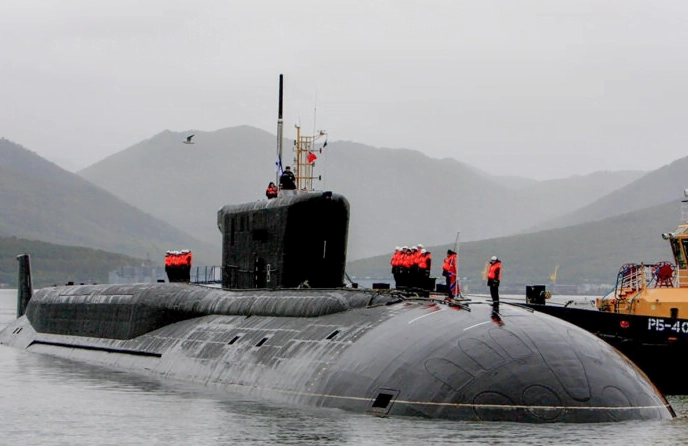Follow Us:

Share
Defense Feeds – In today’s we are going to examine closely on Borei-Class Submarines and trying to answer the following inquiry, are they actually the Backbone of the Russian Deterrence?
As we know that the Soviet Union entrusted the Russian Federation with a sizable submarine force. This force had been the backbone of the Soviet Navy since the end of World War II.
Submarines became even more essential in the Soviet Navy once nuclear propulsion and nuclear-armed submarine-launched ballistic missiles (SLBMs) were available.
Moreover, the Russian economy has changed drastically since 1991. As a result of this, the Russian submarine force has been seriously impacted.

The Soviet Navy’s incredible production rates have slowed, as has the economy’s poor performance, resulting in wage deficits, reduced operational pace, and considerable difficulty in disposing of retired nuclear-powered submarines.
For the record, the Russian fleet consists of 217 various types of warships and 69 submarines, 45 of which are nuclear-powered. Russia’s shipbuilding capacity system has started to demonstrate progressive trend in the production of numerous types of warships, including the “Yasen” and “Borei” class submarines, which are outfitted with the most advanced equipment.
Let’s take a look at the Borei- Class Submarines
The Borei-class submarines were first launched in 1996 to replace the obsolete Typhoon-class, Kalmar-class (NATO: Delta III), and Delfin-class (NATO: Delta IV) submarines. The first Borei-A class submarine, the ‘Knyaz Vladimir,’ was launched in 2017, with gradual alterations design.
Read also: Dreadnought-Class Submarines: UK’s Next-Gen Nuclear Deterrent
Despite increasing prices, the Russian government remains committed to the upgrading effort, which is seen as crucial to maintain the nation’s nuclear deterrent.
The Russian Ministry of Defense announced to build two new Borei-class nuclear submarines in April of this year. These submarines will deploy long-range cruise missiles and are nearly identical to the earlier Borei-class submarines.
More progressively, Russian Navy hold three Project 955 “Borei-class” (NATO: Dolgorukiy) SSBNs. These submarines are 170 meters long and can submerge at a speed of 29 knots. Each Bulava SLBM contains Multiple Independently targetable Reentry Vehicle (MIRV) ballistic missiles.
Specifically, a submarine of the Borei class can carry 16 ballistic RSM-56 Bulava missiles, each with four to six ballistic missiles. The Bulava SLBM is a sea-launched variant of the Topol-M that can be equipped with six to ten nuclear multiple independently targetable reentry vehicle (MIRV) warheads.
Lastly, the Borei class is a significant improvement throughout its predecessor and appears to be capable of meeting Russia’s submarine nuclear deterrence requirements. In short, the Borei class plays an important part in Russian nuclear deterrent.
However, it is unclear whether the Russian Ministry of Defense intends to consolidate the Borei project in addition to making it a long-term budgetary solution.
Share
Defense Feeds is publication focusing on informing, engaging, and empowering the world by providing accurate information from defense technology.
Powered by Defense Feeds © 2025 – All rights reserved.